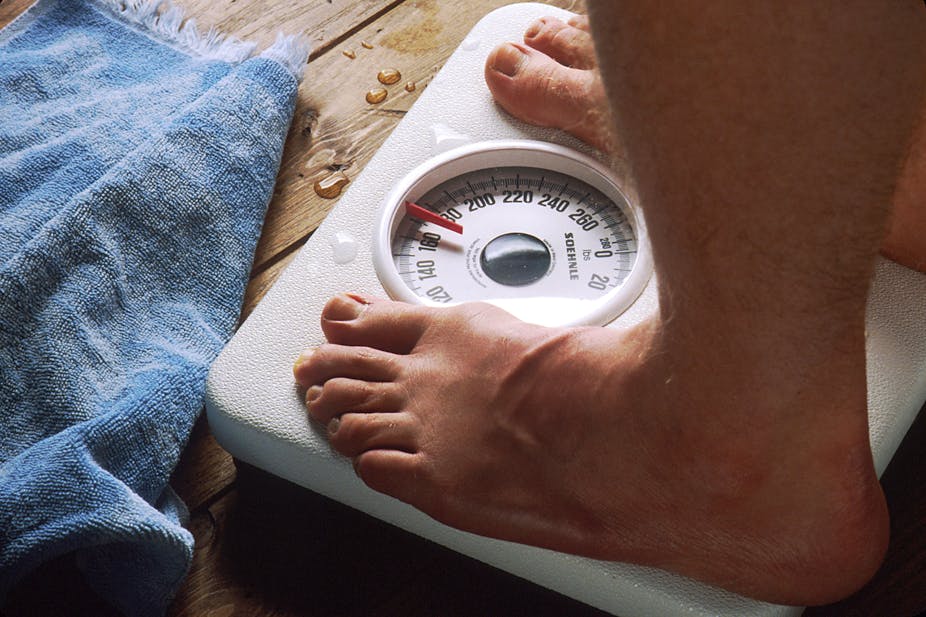OBESE NATION: It’s time to admit it - Australia is becoming an obese nation. Today we launch a series looking at how this has happened and, more importantly, what we can do to stop the obesity epidemic.
We start by setting the scene with a map illustrating the extent of the problem and some tools to understand what this means: how excess weight causes disease and here, how we measure obesity.
Australians are getting fatter and there’s no dispute over how this increasing weight is affecting our health. Different methods of assessing body fat can give different interpretations of just how much excess weight a person is carrying, but all methods point in the same direction when applied over time.
The most common measure of body fat and associated health risks is body mass index (BMI). BMI was developed as a simple way to compare different groups of people, based on the correlation between height and weight as an indicator of excess body fat.
BMI is calculated by dividing weight in kilograms by the square of height in metres – a simple online calculator is available here. A healthy BMI for an adult is between 18.5 and 25 kg/m². Between 25 and 30 kg/m² is considered overweight and 30 kg/m² and above obese. At a population level, high rates of body fat above 30 kg/m² indicate an increased risk of death and disease.
BMI is the main measure used for international obesity guidelines and is recommended by the World Health Organization. But BMI isn’t perfect. People with the same body weight and height can have different proportions of body fat to lean muscle mass. Athletes with high muscle mass, for instance, can have a lower proportion of body fat than less muscular people, so a BMI calculation can put them into an overweight or obese category, even though their risk of obesity related disease is very low.
This is a frequently cited criticism of BMI, but it needs to be put into perspective. Such people are in the minority and a quick visual inspection will clearly show that it’s muscle, not fat, that such people are carrying the most of.
People from an Asian background tend to have more body fat on a leaner frame, so a lower BMI healthy-weight-range can be used. Conversely, people of a Pacific Islander background tend to have a higher proportion of lean muscle mass compared with fat, so a higher BMI healthy-weight-range is often recommended.
While BMI is a useful measure of overall health risks, it fails to take into account the distribution of fat throughout the body. For this reason, waist circumference was developed as a simpler and potentially more accurate measure of disease risk. Waist circumference is not only a gauge of body fat, but it specifically targets the most dangerous type of fat: visceral fat.

Visceral fat is found between the organs of the abdomen and contributes to belly fat. There’s a strong correlation between central obesity and cardiovascular disease, insulin resistance, type 2 diabetes, inflammatory diseases, high blood pressure and other obesity related diseases.
For men, the aim is to have a waist circumference below 94cm; for women it’s 80cm. Measures above 102cm for men and 88cm for women carry a very high risk of developing type 2 diabetes, high blood pressure, cardiovascular disease and even some forms of cancer. For people of an Asian background, slightly lower waist circumference goals apply: under 90cm for men and 80cm for women.
More recently, estimates of body fat percentage and health risks have looked at waist-to-hip ratio and even waist-to-height ratio. Both these measures take into account central fat stores so can give a better health risk estimate than BMI. For men, a waist-to-hip ratio below 0.9 and 0.8 for women correspond to a healthy weight BMI.
An advantage of using waist measures for body fat estimates is that it takes away the stigma of needing to step on the scales. It also allows for the use of cut-off values that avoid terms of overweight and obesity, and instead focus on the risk of metabolic disease.

Labelling a person as “obese” may not always be helpful in affecting positive behaviour changes, especially when a person already acknowledges that they’re carrying a bit of extra weight. “Unhealthy BMI”, “above the healthy weight range”, and “excess weight” can all carry the same message about the need to shed excess weight for better health and reduced risk of disease.
Another technique to measure body fat is by bioelectrical impedance. This method involves passing a small electrical current through the body, normally by a specialised set of scales that a person stands on. The scales measure water volume and, by the use of special algorithms, arrive at a body fat percentage estimate. The accuracy of such machines can vary dramatically, especially around the cheaper end of the price range.
By far the most accurate way to measure body fat is by magnetic resonance imaging (MRI), computed tomography (CT) or X-ray scanning, but such methods are not realistic for the public to use and belong firmly in the world of research.
So long as the limitations of a weight assessment method are understood, methods such as BMI and waist circumference are quick and simple validated ways to assess weight and disease risk that can be used by health professionals and the public alike.
This is part two of our series Obese Nation. To read the other instalments, follow the links below:
Part one: Mapping Australia’s collective weight gain
Part three: Explainer: how does excess weight cause disease?
Part four: Recipe for disaster: creating a food supply to suit the appetite
Part five: What’s economic growth got to do with expanding waistlines?
Part six: Preventing weight gain: the dilemma of effective regulation
Part seven: Filling the regulatory gap in chronic disease prevention
Part eight: Why a fat tax is not enough to tackle the obesity problem
Part nine: Education, wealth and the place you live can affect your weight
Part ten: Innovative strategies needed to address Indigenous obesity
Part eleven: Two books, one big issue: Why Calories Count and Weighing In
Part twelve: Putting health at the heart of sustainability policy
Part thirteen: Want to stop the obesity epidemic? Let’s get moving
Part fourteen: Fat of the land: how urban design can help curb obesity
Part fifteen: Industry-sponsored self-regulation: it’s just not cricket
Part sixteen: Regulation and legislation as tools in the battle against obesity
See more Explainer articles on The Conversation.

